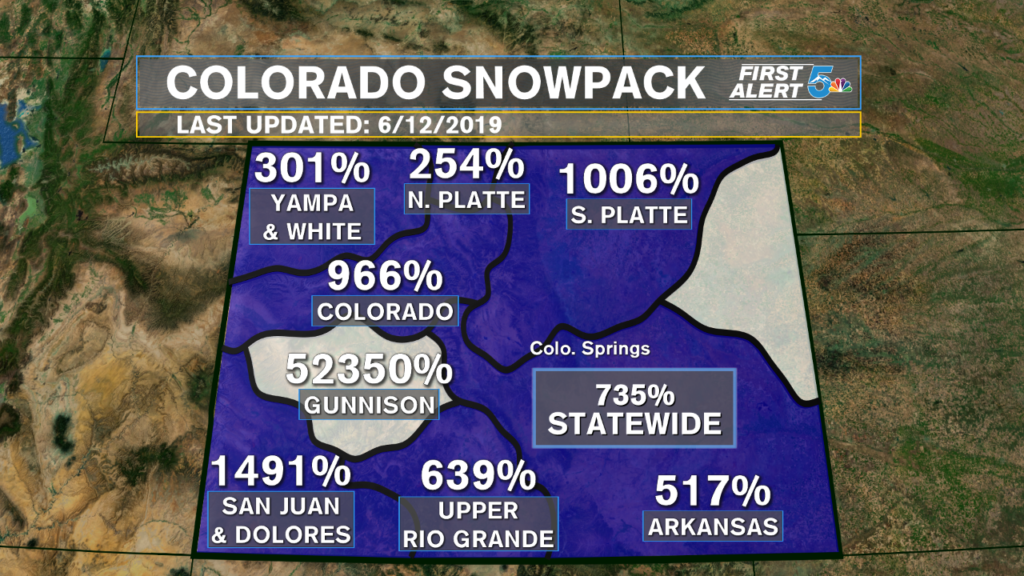
Snotel sites across Colorado, especially in the Gunnison basin, are showing extreme values for this time of year. While it’s fun to see snowpack values this high, it’s important to know that by this time of year, these numbers don’t really mean very much.
Why are the snowpack values so high?

This answer is pretty simple: we have a lot of snow and the melting has been delayed. Typically by May and especially by June, a large part of Colorado’s mountain snowpack has either melted or started melting.
This year has been a little different. Colorado saw heavy snow in May and cooler than average statewide weather into the first week of June. Not only did this push back melting season, there is way more snow than normal to melt down.
Why do these numbers really not matter that much?
Snotel works by comparing the current snowpack to the median or “normal” amount of snow for that time of year. As we get later into the year, the “normal” snowpack values become smaller and smaller. This means that any snow still left on the mountains at this time of year is getting compared to a smaller number by the day, making the percentage of remaining snow seem massive.
Imagine standing next to someone who is half your height. You’re twice as tall as they are. If they crouch down and you don’t change, from their perspective, you’re 4 times larger than you were. The same principle works with snowpack. We’re not adding more snow to our mountains, we just keep comparing the snow we have to a smaller and smaller number, making the percentages look huge.
Until we start to see quick and aggressive snowmelt, which should really start picking up with speed in the next couple weeks, snowpack readings will keep looking very high.

